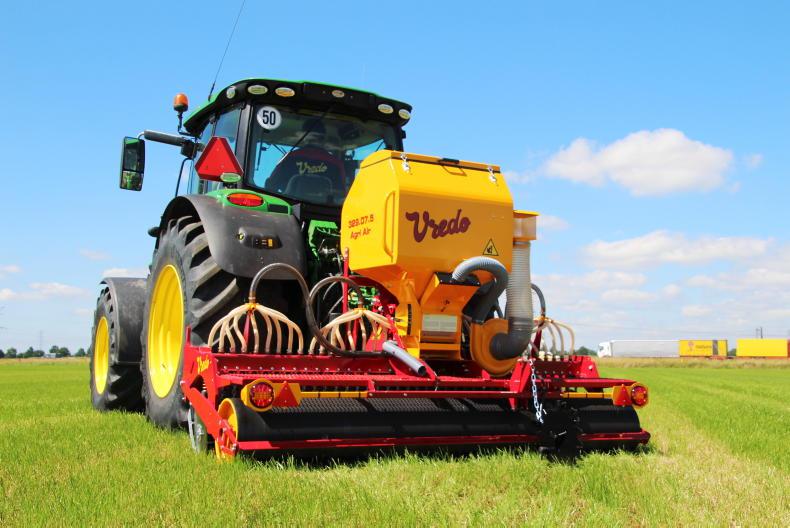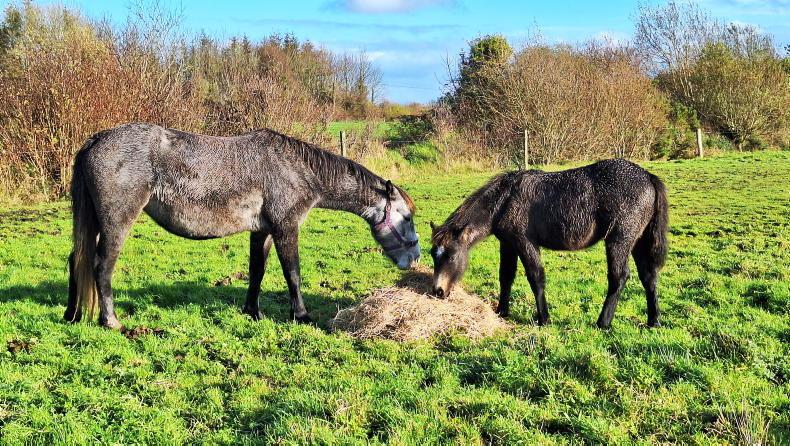The closed period for slurry spreading expires at midnight on 31 January, with farmers able to spread organic manures under suitable conditions from 1 February onwards.
Prior to the lifting of those restrictions, CAFRE held an open day on the Watson farm outside Coagh in Co Tyrone on Tuesday, to promote responsible use of slurry and farmyard waste.
Attendees were reminded that during February, buffer zones to water courses and application rates differ from those in place from March to September.
Buffer zones
During February, farmers must leave a 30m buffer to lakes and 20m to other waterways if slurry is applied using a splash plate.
If using Low Emission Slurry Spreading Equipment (LESSE), a 5m buffer applies.
From 1 March to 30 September, buffer zones when using a splash plate are 20m from lakes and 10m from rivers, reducing to 3m when using LESSE.
The maximum application rate for slurry in February is 2,700 gallons/acre, although from March to September, this increases to 4,500 gallons/acre.
Targeted use
Farmers were advised to target slurry nutrients to fields that are at index zero and one for phosphorus (P) and potassium (K).
Nutrient levels
As slurry varies in nutrient content, it is good practice to take a slurry sample to determine how much nitrogen (N), P and K is available.
Cattle slurry with a typical 6% dry matter supplies approximately 9 units of N, 11 units of P and 20 units of K per 1,000 gallons/acre spread.
However, this relates to soils at index 2- and pH 6 or above. For soils around pH 5.5, P availability is reduced by 30% and at pH 5, it drops by 50%.
Read more
Working safely to repair storm damage
Farmer Writes: no point saying no to an inspector
The closed period for slurry spreading expires at midnight on 31 January, with farmers able to spread organic manures under suitable conditions from 1 February onwards.
Prior to the lifting of those restrictions, CAFRE held an open day on the Watson farm outside Coagh in Co Tyrone on Tuesday, to promote responsible use of slurry and farmyard waste.
Attendees were reminded that during February, buffer zones to water courses and application rates differ from those in place from March to September.
Buffer zones
During February, farmers must leave a 30m buffer to lakes and 20m to other waterways if slurry is applied using a splash plate.
If using Low Emission Slurry Spreading Equipment (LESSE), a 5m buffer applies.
From 1 March to 30 September, buffer zones when using a splash plate are 20m from lakes and 10m from rivers, reducing to 3m when using LESSE.
The maximum application rate for slurry in February is 2,700 gallons/acre, although from March to September, this increases to 4,500 gallons/acre.
Targeted use
Farmers were advised to target slurry nutrients to fields that are at index zero and one for phosphorus (P) and potassium (K).
Nutrient levels
As slurry varies in nutrient content, it is good practice to take a slurry sample to determine how much nitrogen (N), P and K is available.
Cattle slurry with a typical 6% dry matter supplies approximately 9 units of N, 11 units of P and 20 units of K per 1,000 gallons/acre spread.
However, this relates to soils at index 2- and pH 6 or above. For soils around pH 5.5, P availability is reduced by 30% and at pH 5, it drops by 50%.
Read more
Working safely to repair storm damage
Farmer Writes: no point saying no to an inspector










SHARING OPTIONS